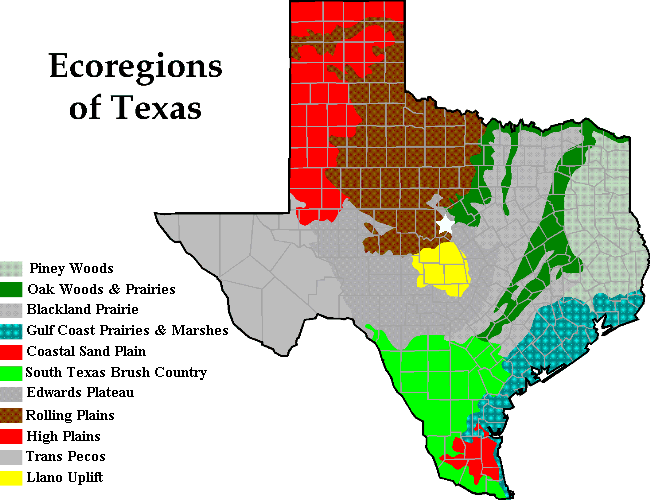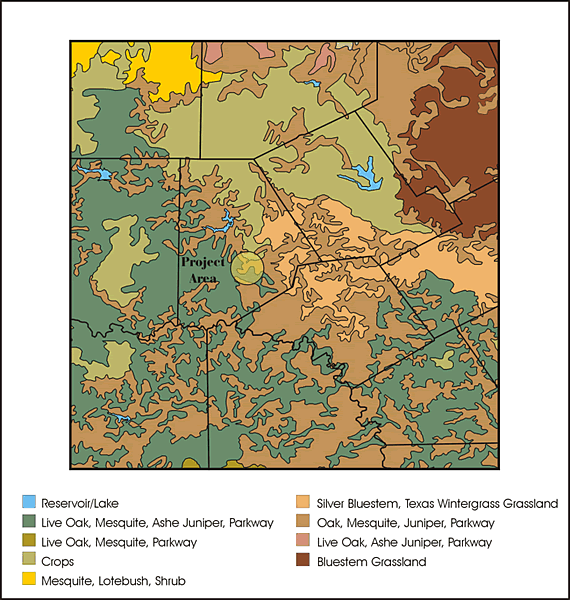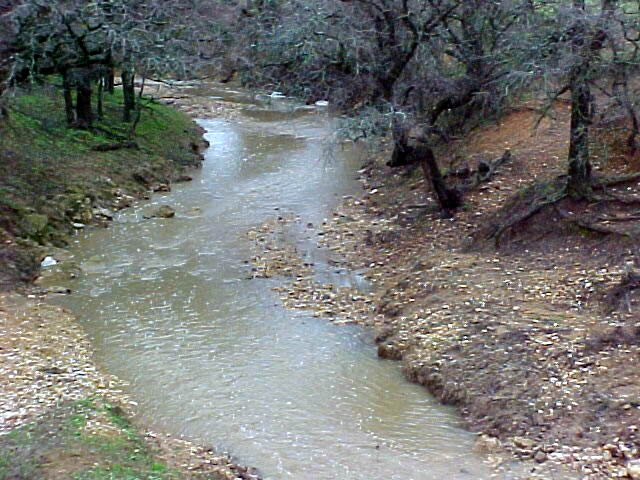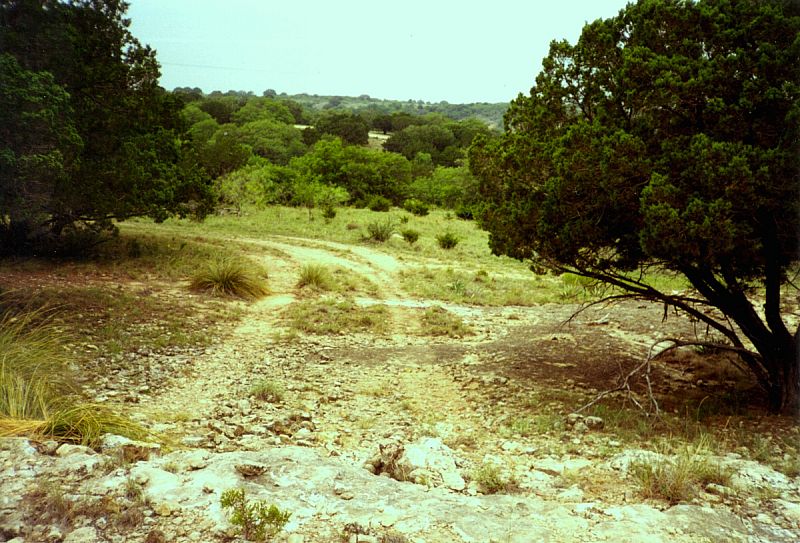
Camp Bowie (marked by white star) is located
on the southeastern edge of the Rolling Plains, just north
of the Llano Uplift, or Central Mineral region, of the Edwards
Plateau. Map courtesy of Texas Parks and Wildlife Department.
Click for more detail and map key.
Click images to enlarge
|

The Camp Bowie project area encompasses
several different vegetation zones. Map courtesy CAR- UTSA.
Click for more detail and map key.
|
|
The area that is now called Camp Bowie lies within
the Rolling Plains physiographic region. Its gently rolling hills
are cut by seasonally active steams and are dotted with stands of
oak, juniper, mesquite, pecan and elm trees along with grasses and
cacti. But the landscape we see today may scarcely resemble what
hunters and gatherers saw in the prehistoric past, prior to the
17th century (1600s).
Over the past 10,000 years, the vegetation of the
Camp Bowie area shifted between grasslands and woodlands as the
climate fluctuated between dry and moist periods. Brown County is
in a transitional climatic zone between the semi-arid western half
of Texas and the increasingly humid eastern Texas. Climatic shifts
change the dominate vegetation patterns and food supply and, in
turn, the availability and density of animals and birds. Prehistoric
hunters and gatherers would have adapted to the changing resources
as well.
Reconstructing the past environment is important
to the understanding of why people camped in particular areas and
what resources they may have been using. Understanding these questions
helps us to better understand why burned rock middens are so common
in the Camp Bowie region.
Using data such as fossil pollen from bogs and dry
caves and animal bones from archeological sites, scientists have
been able to reconstruct past environments in some areas. Preserved
pollen from certain species of grass or trees helps indicate whether
a prairie or a woodland was present at various times in the past.
Finding bones of animals such as bison—which inhabit grasslands—or
certain species of snails—some of which thrive in aquatic settings,
others in more arid settings—provides another line of evidence
to past environmental conditions.
From roughly 18,000 to 10,000 years ago, Central Texas
began to change from generally cool, moist conditions to a warmer
and drier environment. This period, termed the Late Pleistocene
era, was followed by a moderately moist period from about 8,000
to 10,000 years ago (the Early Holocene period). The Middle Holocene
(4,000 to 8,000 years ago) was generally warm and/or dry, with a
brief moist (mesic) interlude sometime between 5,000 and 6,000 years
ago. By Late Holocene times about 4,000 years ago, the climate shifted
back to wetter conditions similar to the modern climate. These long-term
generalizations are, of course, just that; short-term fluctuations,
such as multi-year droughts, would have sometimes caused drastic
changes in how people used the landscape.
Several types of evidence hint at a dryer period between
about 750 to 1,500 years ago, while a more mesic interval is suggested
for the last 750 to 800 years. While all of the different data may
not be in agreement, it is clear that the past environment was not
static, but fluctuated between warmer, drier and cooler, moister
conditions.
For the Camp Bowie area, the full impact of long-term
climatic changes on the plant and animal communities is—for
the most part—unknown. More recent changes, largely due to
human intervention, are more noticeable. These include an historic
increase in woody species, especially juniper/cedar and mesquite,
caused by the cessation of range fires and severe overgrazing by
livestock in the late 19th and early 20th centuries, the subsequent
clearing of wooded areas, the pumping of water for irrigation that
has lowered water tables, and the impacts of military training.
|

Rains bring seasonal streams in the Camp
Bowie area to life. Shown here is the Devils River, a tributary
of Pecan Bayou and part of the Colorado River drainage system.
(Note that this small "river" in Brown County is
not the same as the far larger Devil's River in southwest
Texas.) |

The Camp Bowie landscape
today probably looks quite different from how it appeared in prehistoric
times. Juniper (cedar) and mesquite, the dominate species today, were less
common (but still present) prior to the late 19th century. The virtual cessation
of range fires, over grazing, fencing, and other historic land use practices
have resulted in major vegetation changes. |
|